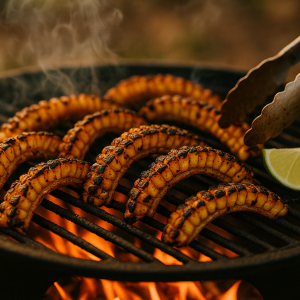Rooibos-Poached Pears

Rooibos-Poached Pears (Fire-Finished)
Equipment
- Braai
Ingredients
- 4 Pears halved
- 2 cups rooibos tea
- 1 stick Cinnamon
- Star anise
- orange zest
Instructions
- Poach pears in rooibos + spices till tender.
- Grill briefly over low heat.
- Serve with syrup drizzle or yoghurt.
Notes
Final Word: Old soul, smokey kiss.



